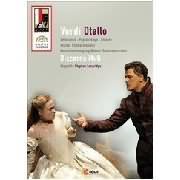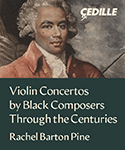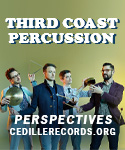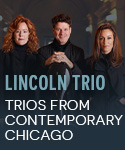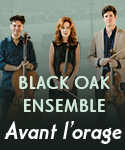For the first new production of Verdi’s great Otello at Salzburg since Herbert von Karajan’s in 1970, perhaps the only living conductor with as fierce a profile and notions of musical totalitarianism was selected: Riccardo Muti. Like Karajan, he hand-picked the cast as well.
Muti’s leadership is staggering in its power, precision, and dramatic thrust. The opening storm is overwhelming; the wind and rain are almost tactile. When the solo cello begins the Love Duet we’re suddenly in an oasis of calm, but when Otello sings of his warrior days the music boils again. The low strings accompanying the recit before Iago’s Credo are nasty; the sound of the children serenading Desdemona is so lovely that we feel as overwhelmed as Otello feels. Both “Ora e per sempre, addio” and “Si pel ciel” are too fast: the former needs more time for its nihilism to register and the second should feel as if the cry for vengeance is writ in stone. Here it seems impetuous.
Muti has opted, quite interestingly, to perform the third-act concertante in its revised, 1894 Paris version. It is, as we might expect from the mature Verdi, a fascinating alternative, giving more solo music to Desdemona. Desdemona’s lengthy last-act scena is hypnotically lovely, thoroughly introspective and sad as Muti leads it. You get the feeling that at least in the opera’s first half the orchestra was overwhelmingly loud live; the DVD engineers probably have been kinder to the voices than I presume Muti was.
Latvian tenor Aleksandrs Antonenko, the Otello, was just 33 when this was recorded. From the first (difficult) notes we hear a voice of quality, size, and richness from top to bottom; his breath control is stupendous and his musicianship scrupulous. There seems to be no strain at either end, although the top does not quite blossom as it should. I bet he’s better in the role since this performance, his debut. He’s a good-looking, round-faced man with incongruous green eyes, made more incongruous by the fact that this Otello is not Moor-colored–rather, he looks as if he has been either spray-painted orange or has been in a tanning booth for too long.
The real problem with Antonenko’s performance is that he seems emotionally unready for it. Perhaps because Muti sticks so rigidly to sung notes–every great Otello I’ve heard or seen (Vickers, Domingo, McCracken live, del Monaco on discs and video) occasionally will lapse into momentary Sprechstimme for emphasis–he leaves Antonenko no room for “interpretation”. But I doubt that’s all there is to it. There is no feral quality and no danger; more crucially, there is little pathos. Let us wait and watch; there may be more to him.
Desdemona is the young (not yet 30) Russian soprano Marina Poplavskaya, a good-looking blond who moves easily and sings with a potent lyric sound. Her voice has a bit of a Slavic edge but she tames it to sing softly and her accuracy is admirable. She sees Desdemona as passionate, with strong feelings–hardly a willing victim.
As Iago, Carlos Alvarez sings with the truest Italianate style of all. Snide and conniving, he sings his “Credo” in front of the curtain (which he both draws to close and re-opens) directly to the audience. It may not erase memories of Gobbi for depth or Milnes for beauty of tone, but there are no complaints. Young American tenor Stephen Costello, looking boyish and sincere, is the mellifluous Cassio. The rest of the cast impresses with musicianship and involvement.
Designer George Souglides presents the opera against the backdrop of a featureless fortress with galleries and porticos. Crashing waves, passing clouds, etc, are projected on a large screen, center stage, with a clear, raked performance area in front of it. It does not offend or add. I understood less why Desdemona, bedless, was strangled on a huge black carpet. Stephen Langridge’s direction leaves the singers alone for the most part; finer actors could make a great deal of his lack of management. A good move, as mentioned, has Iago in front of the curtain. In the third act, Lodovico enters without the retinue called for in the libretto: what leader would do so? It is an anti-dramatic move–perhaps not to draw attention away from Muti (whom, I believe, chose Langridge to direct). The costumes by Emma Ryott are handsome.
As can be gleaned from this description, this show is Muti’s. He is closely watched by the singers at all times, and the Vienna State Opera Orchestra plays for him with an urgency and intensity that can only come from a combination of love and fear. The result can be thrilling, but how wonderful would it be to hear this same cast, orchestra, and chorus, with Muti at the helm, in a few years, with him respecting them as much as vice-versa?
Subtitles are in all European languages; the bonus material, interviews with everyone except Muti, is more interesting than most of its ilk. Peter Schönhofer’s direction for video relies a bit too much on close-ups–fine for Desdemona, a bit damaging for the somewhat detached Otello.
Though not in great sound nor shot with today’s techniques, the DVD leader is the 1978 completely live performance with Vickers and Scotto available from the Met. Renée Fleming is gorgeous with Domingo from the Met in 1995 (DG), but the tenor is better with Muti from La Scala a few years later. Skip the Zeffirelli/Domingo movie and Karajan/Vickers film; both are cut and are untrue to the score. A performance with the unreliable but strangely superb José Cura from the Liceu (Opus Arte) also is worth seeing.






















